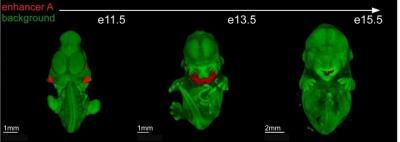Study finds 'mad cow disease' in cattle can spread widely in ANS before detectable in CNS
bovine spongiform encephalopathy (BSE, or "mad cow disease") is a fatal disease in cattle that causes portions of the brain to turn sponge-like. This transmissible disease is caused by the propagation of a misfolded form of protein known as a prion, rather than by a bacterium or virus. The average time from infection to signs of illness is about 60 months. Little is known about the pathogenesis of BSE in the early incubation period. Previous research has reported that the autonomic nervous system (ANS) becomes affected by the disease only after the central nervous system (CNS) has been infected. In a new study published in The American Journal of Pathology, researchers found that the ANS can show signs of infection prior to involvement of the CNS.
"Our results clearly indicate that both pathways are involved in the early pathogenesis of BSE, but not necessarily simultaneously," reports lead investigator Martin H. Groschup, PhD, Institute for Novel and Emerging Infectious Diseases at the Friedrich-Loeffler-Institut, Riems, Germany.
To understand the pathogenesis of BSE, fifty-six calves between four and six months of age were infected orally with BSE from infected cattle. Eighteen calves were inoculated orally with BSE-negative material from calf brainstem as controls. The study also included samples collected from a calf that had died naturally of BSE. Tissue samples from the gut, the CNS, and the ANS were collected from animals every four months from 16 to 44 months after infection. The samples were examined for the presence of prions by immunohistochemistry. Samples were also used to infect experimental mice that are highly sensitive to a BSE infection.
A distinct accumulation of the pathological prion protein was observed in the gut in almost all samples. BSE prions were found in the sympathetic ANS system, located in the thoracic and lumbar spinal cord, starting at 16 months after infection; and in the parasympathetic ANS, located in the sacral region of the spinal cord and the medulla, from 20 months post infection. There was little or no sign of infection in the CNS in these samples. The sympathetic part of the ANS was more widely involved in the early pathogenesis than its parasympathetic counterpart. More bovines showing clinical symptoms revealed signs of infection in the sympathetic nervous system structures at a higher degree than in the parasympathetic tissue samples. The earliest detection of BSE prions in the brainstem was at 24 months post infection. However, infection detected in the spinal cord of one animal at 16 months post infection suggests the existence of an additional pathway to the brain.
"The clear involvement of the sympathetic nervous system illustrates that it plays an important role in the pathogenesis of BSE in cattle," notes Dr. Groschup. "Nevertheless, our results also support earlier research that postulated an early parasympathetic route for BSE."
The results, Dr. Groschup says, indicate three possible neuronal routes for the ascension of BSE prions to the brain: sympathetic, parasympathetic, and spinal cord projections, in order of importance. "Our study sheds light on the pathogenesis of BSE in cattle during the early incubation period, with implications for diagnostic strategies and food-safety measures."
Other news from the department science

Get the life science industry in your inbox
By submitting this form you agree that LUMITOS AG will send you the newsletter(s) selected above by email. Your data will not be passed on to third parties. Your data will be stored and processed in accordance with our data protection regulations. LUMITOS may contact you by email for the purpose of advertising or market and opinion surveys. You can revoke your consent at any time without giving reasons to LUMITOS AG, Ernst-Augustin-Str. 2, 12489 Berlin, Germany or by e-mail at revoke@lumitos.com with effect for the future. In addition, each email contains a link to unsubscribe from the corresponding newsletter.
Most read news
More news from our other portals
Last viewed contents

Uhlmann Pac-Systeme honored with TOP 100 Award - Manufacturer of pharmaceutical packaging machines wins innovation competition
Nutrigenomics

What is it about your face?
VIB GM poplar field gets authorized
Rules_of_surgery
Leigh's_disease
Evotec expands neuroscience collaboration with Bristol Myers Squibb to include novel cell type - Triggers US$ 9.0 m payment to Evotec
Halcygen to acquire wholly owned subsidiary of Hospira
Finding a way forward in the fight against prion disease
List_of_world_bumblebee_species
Dun_gene






















































